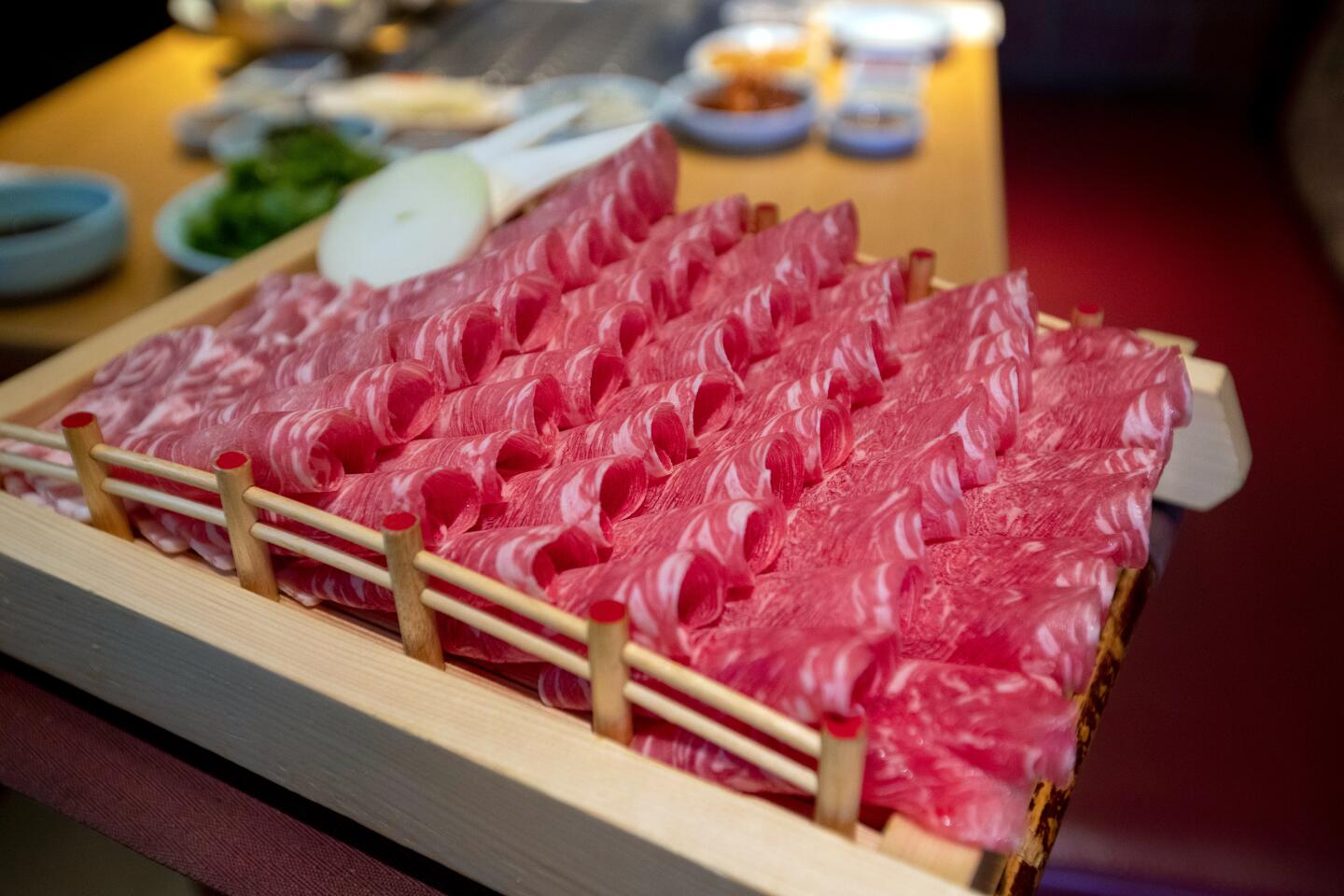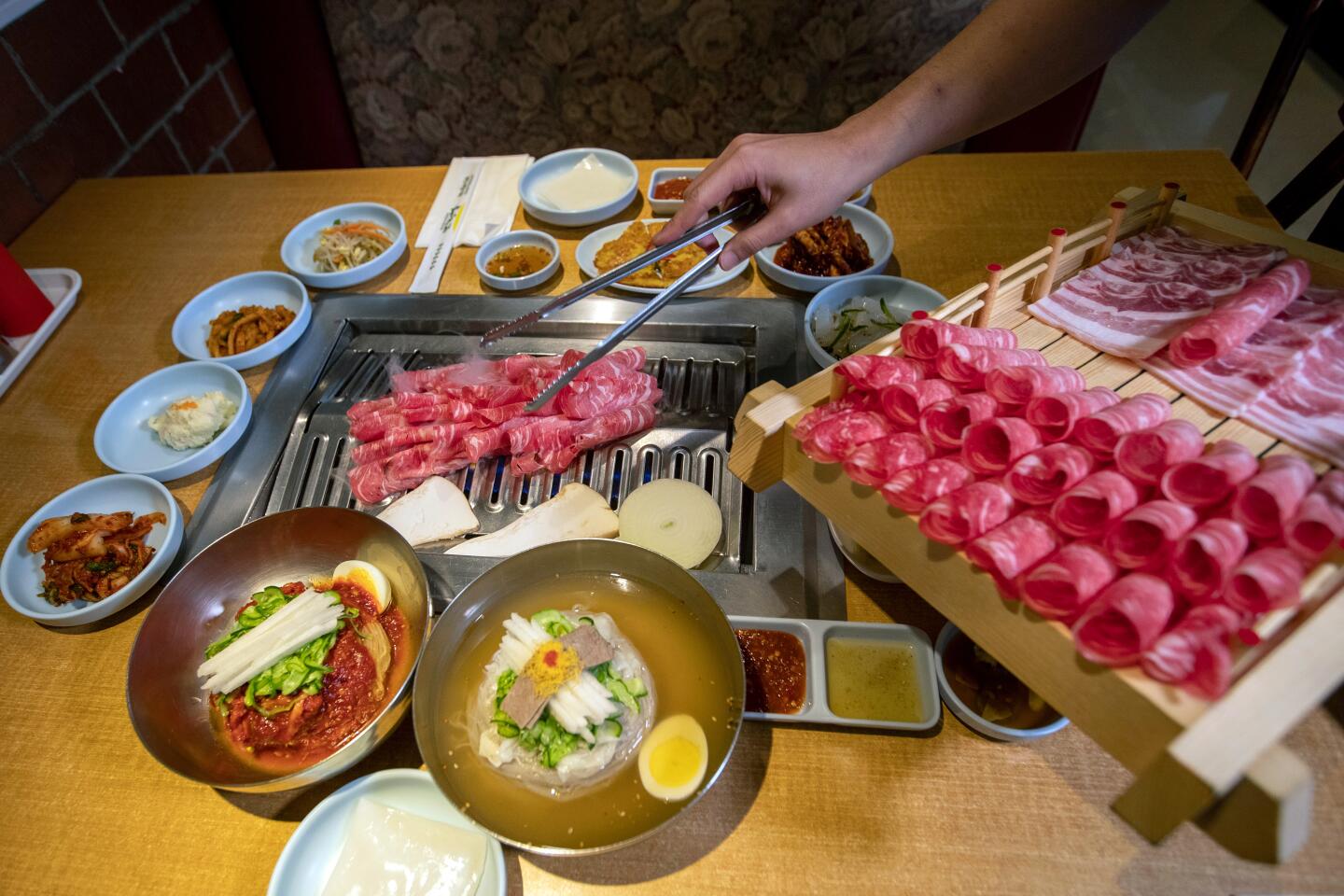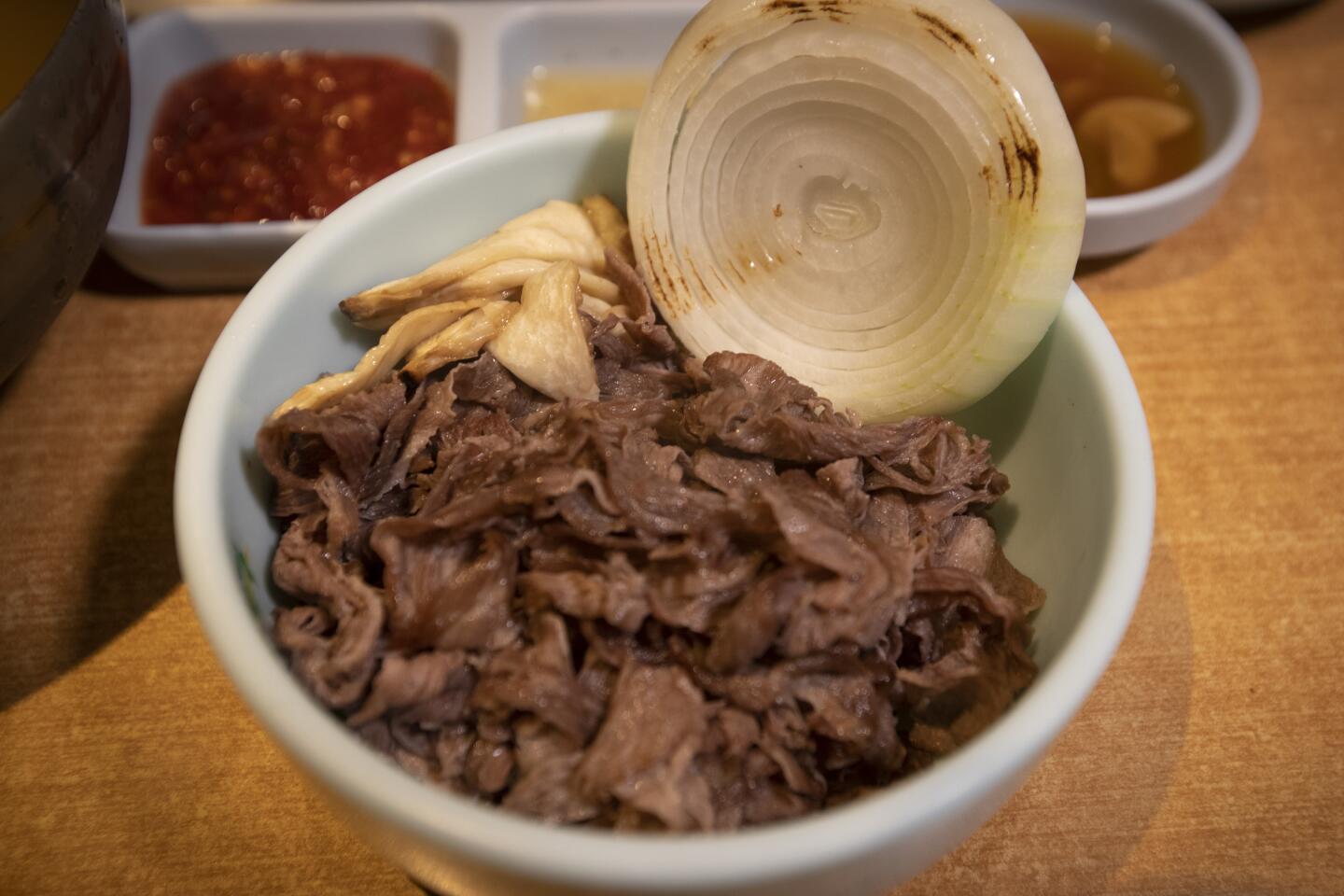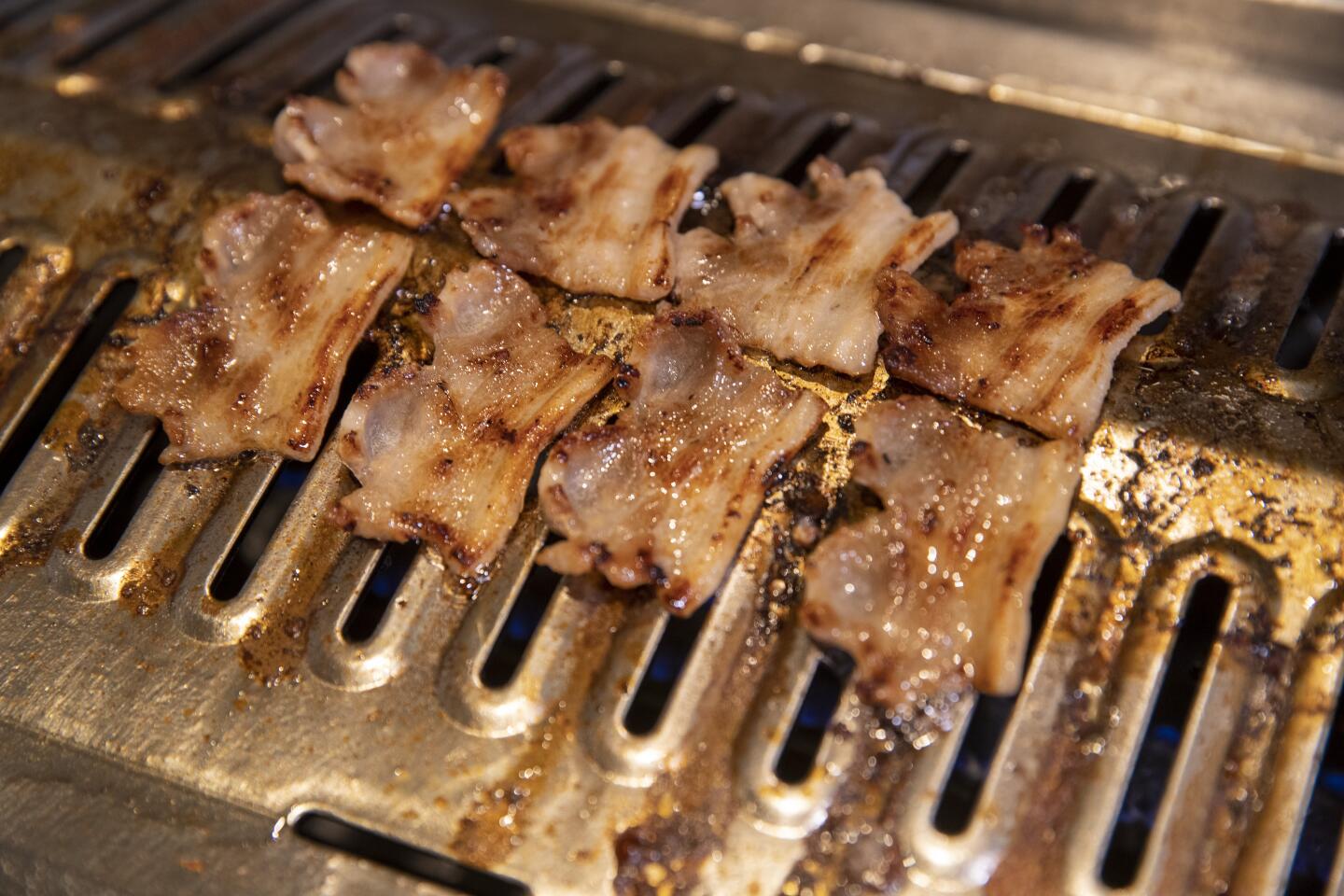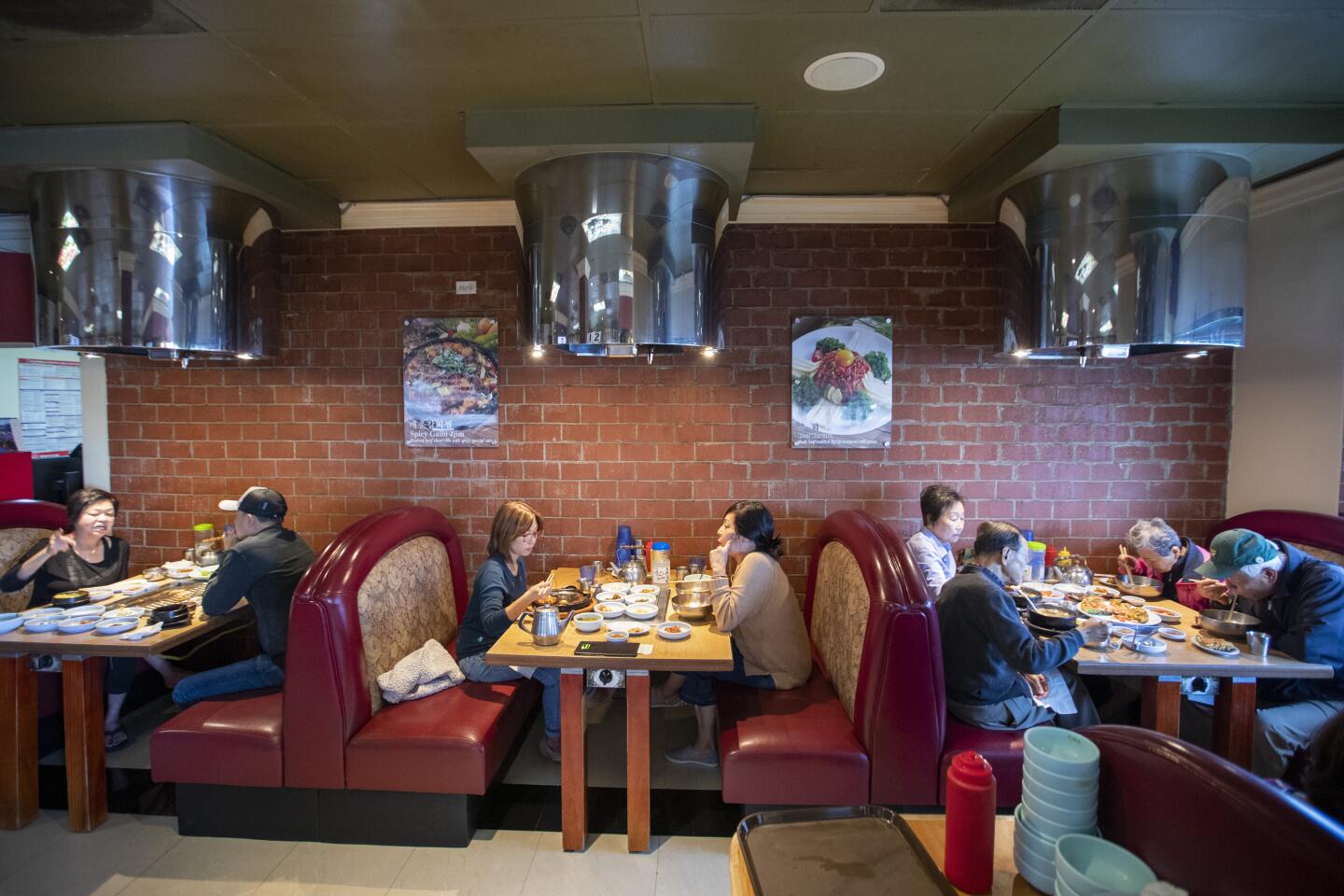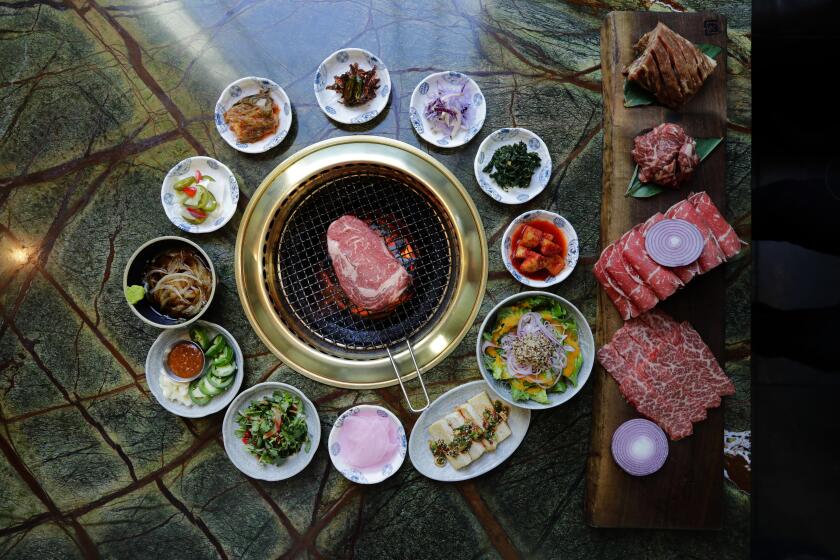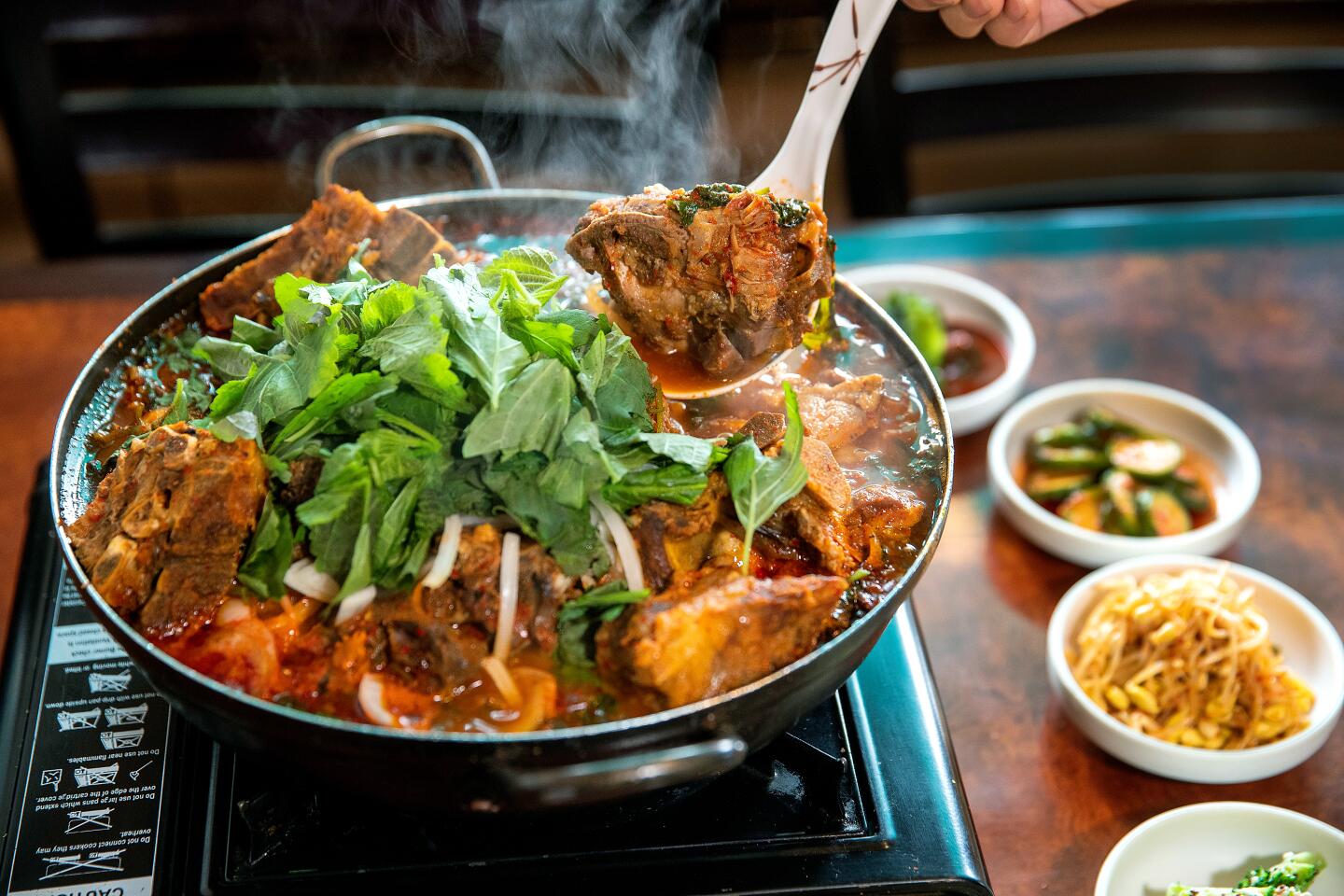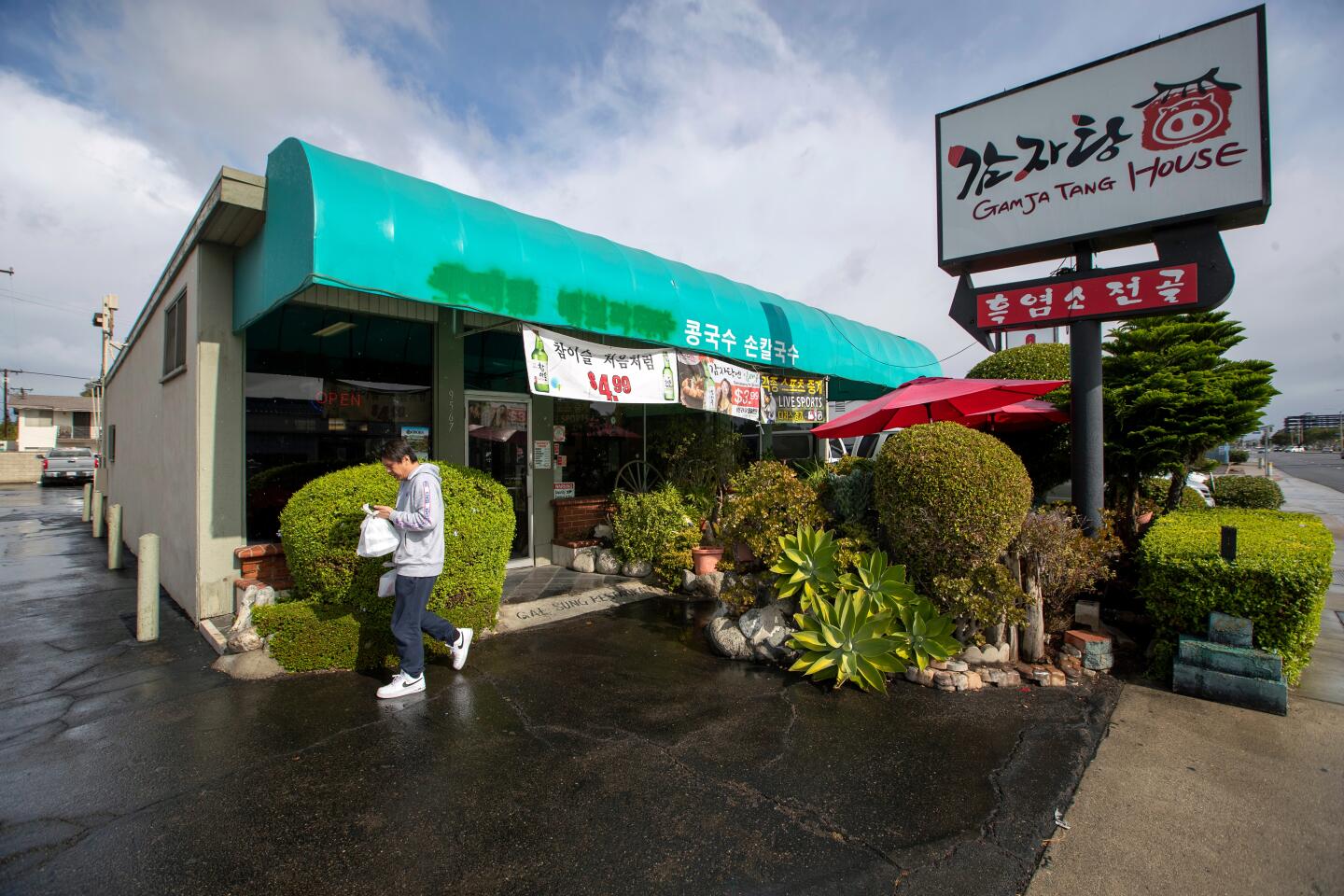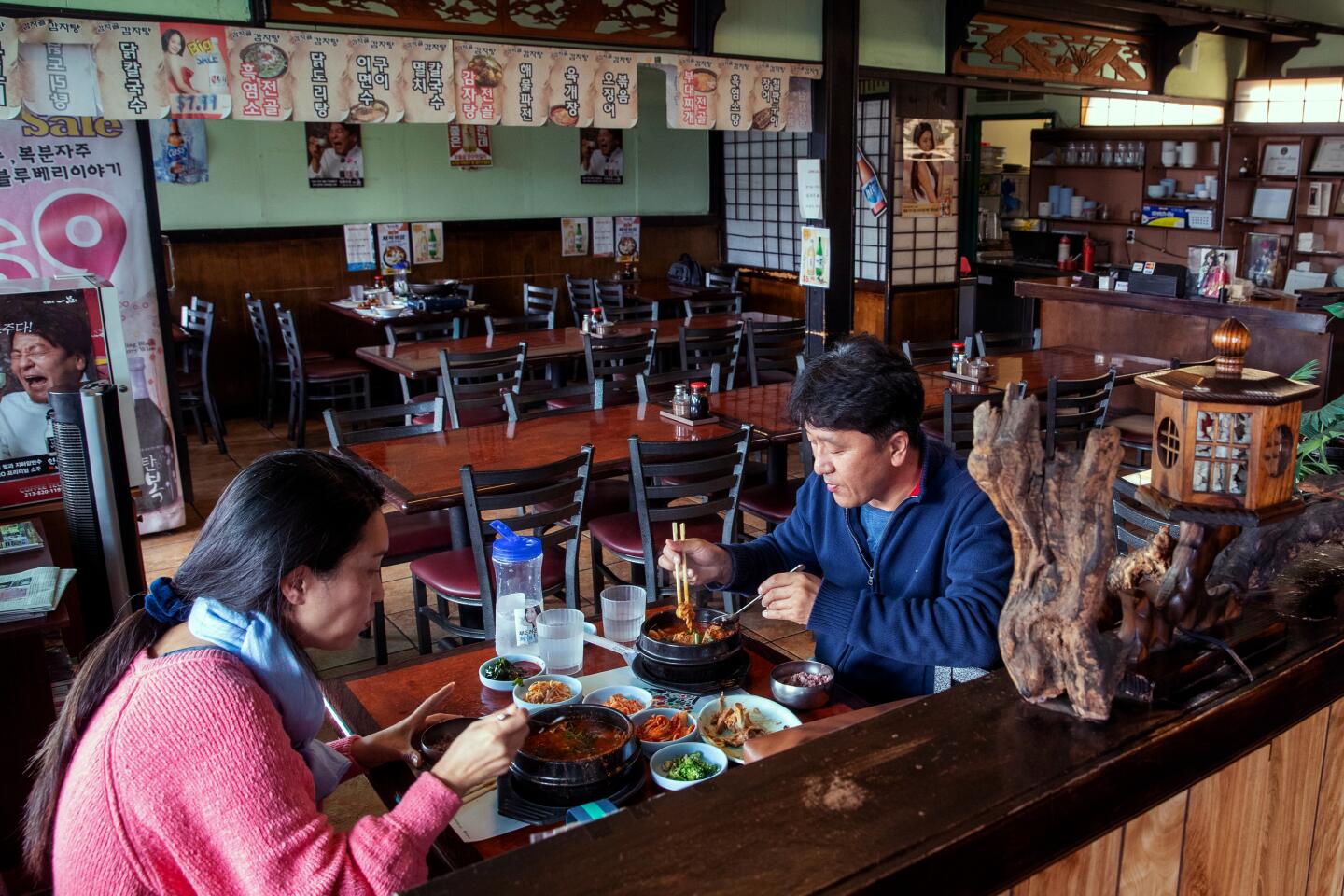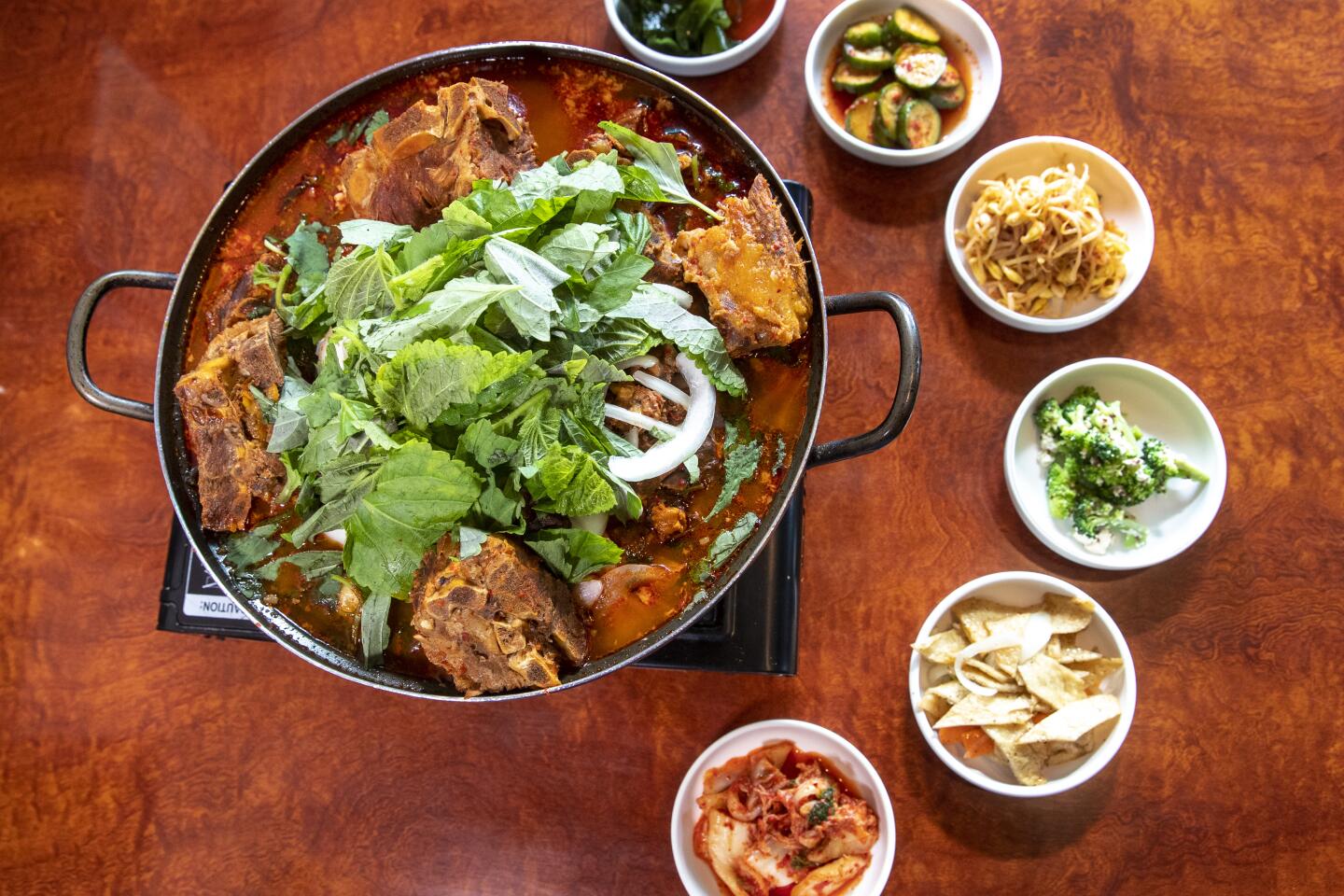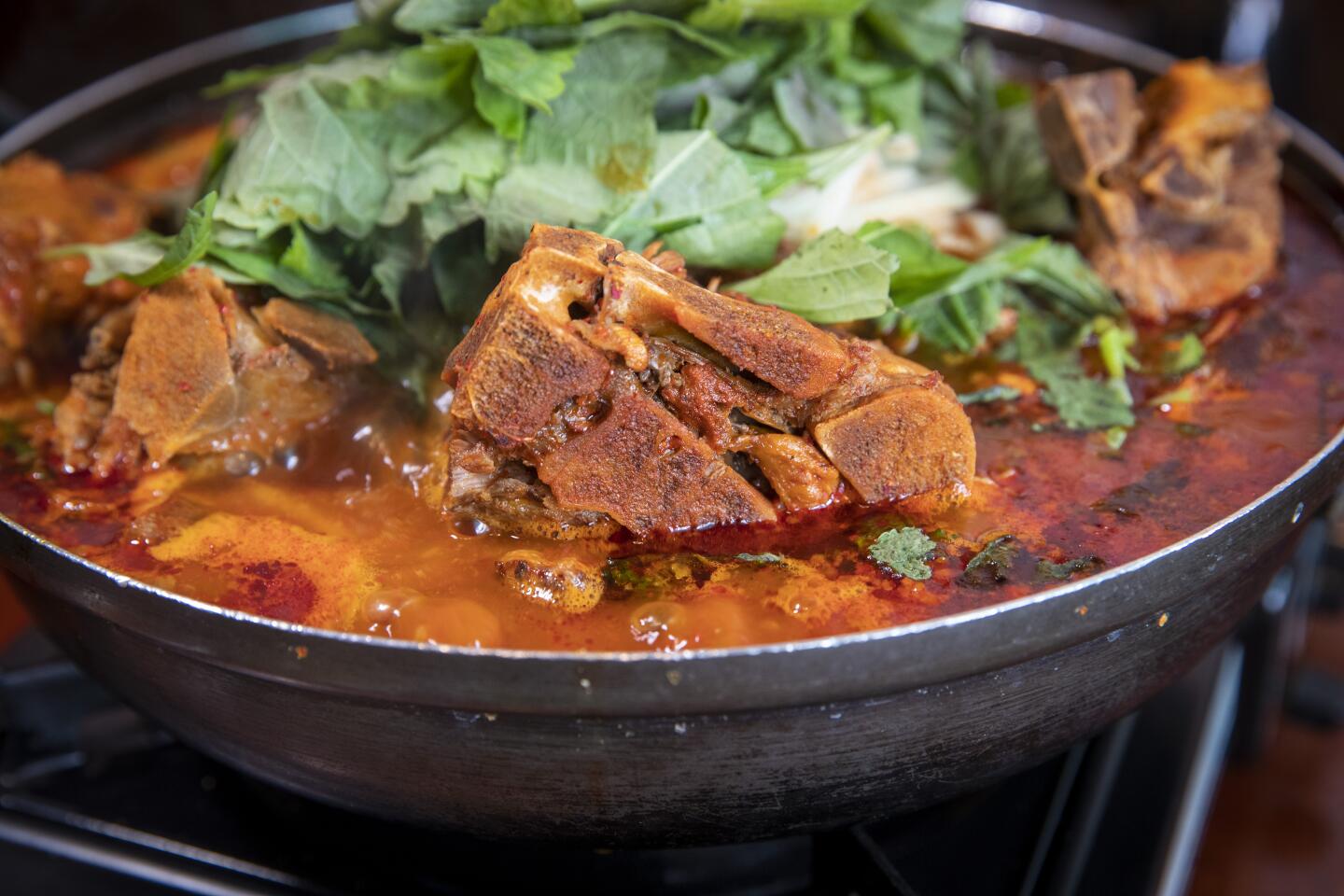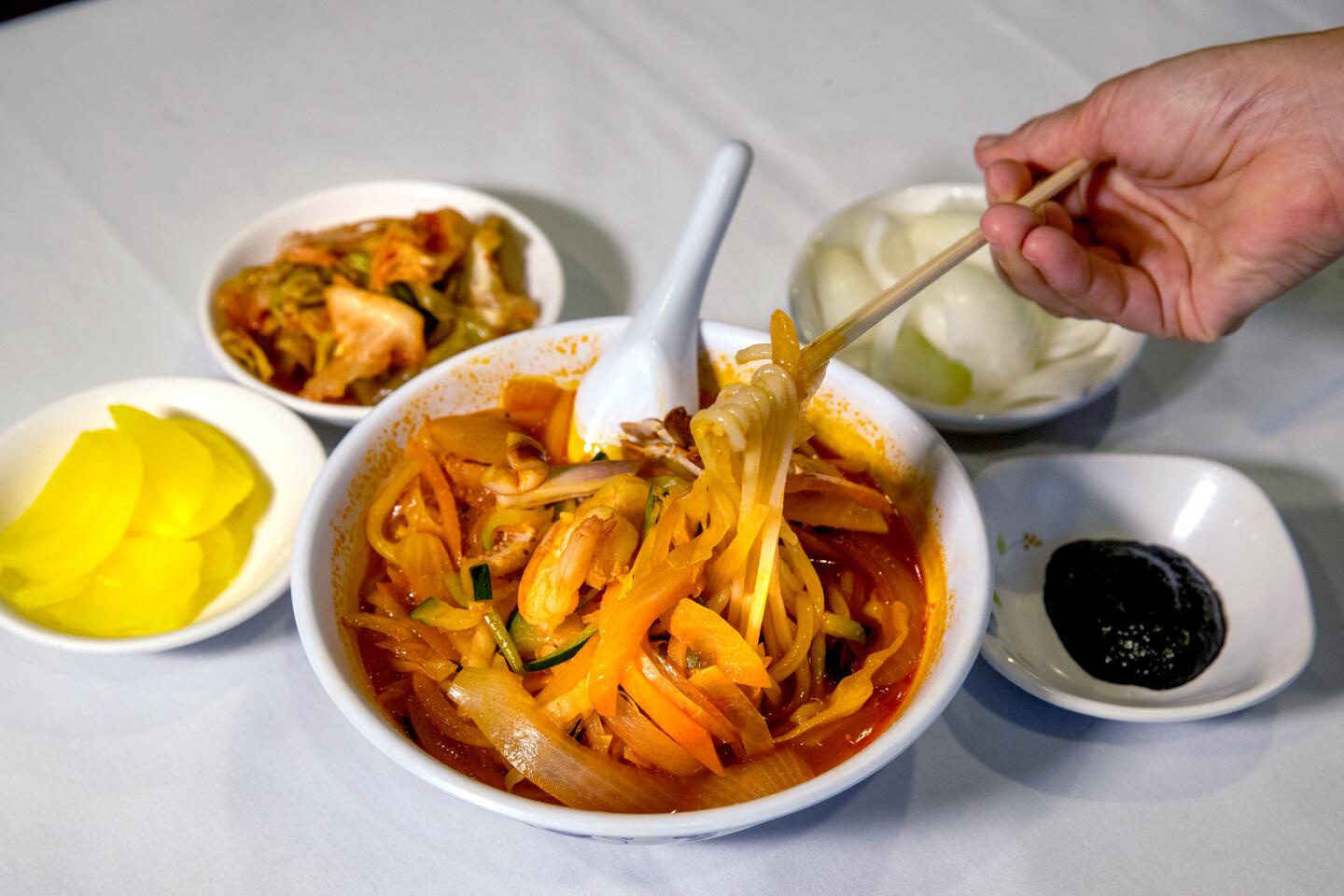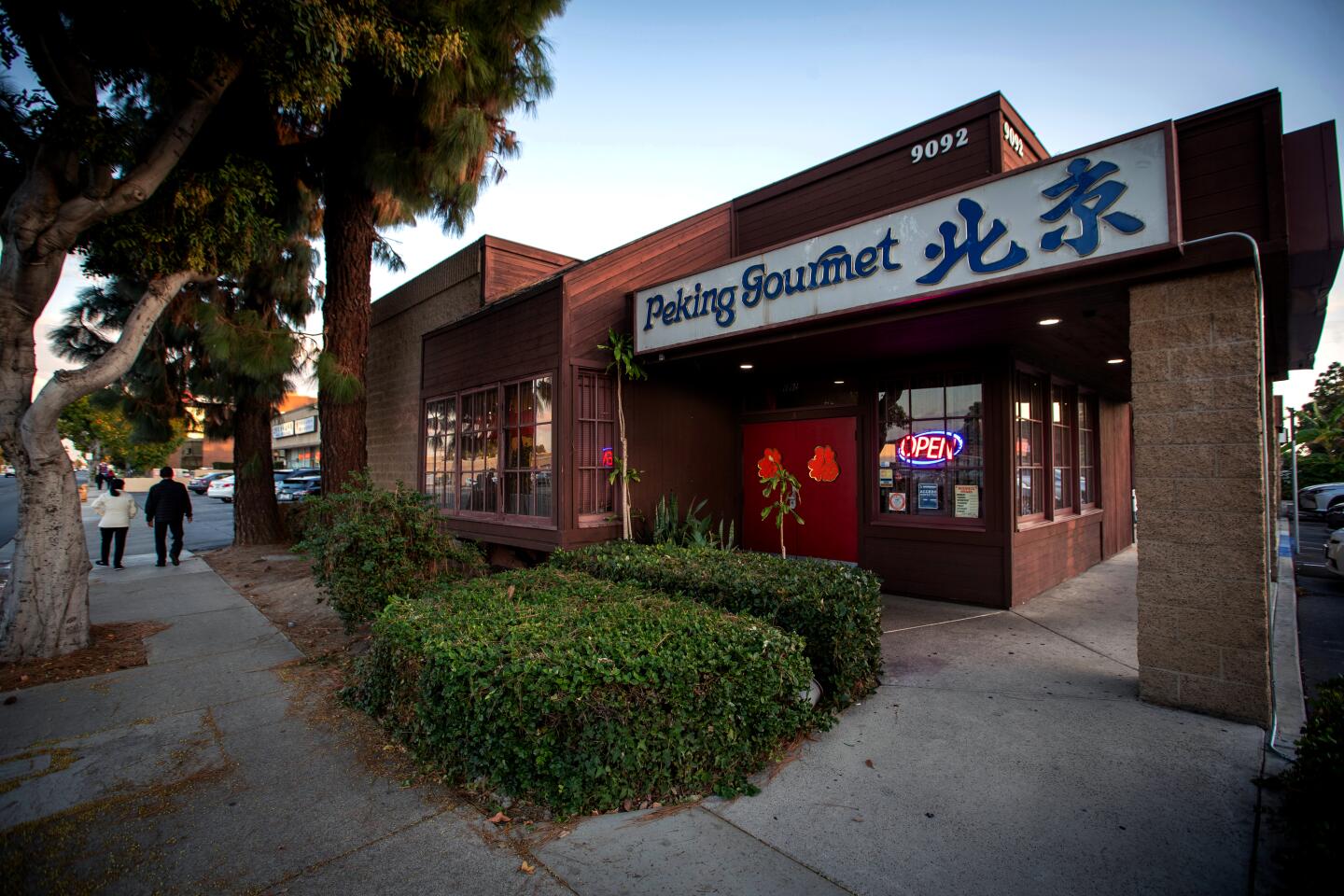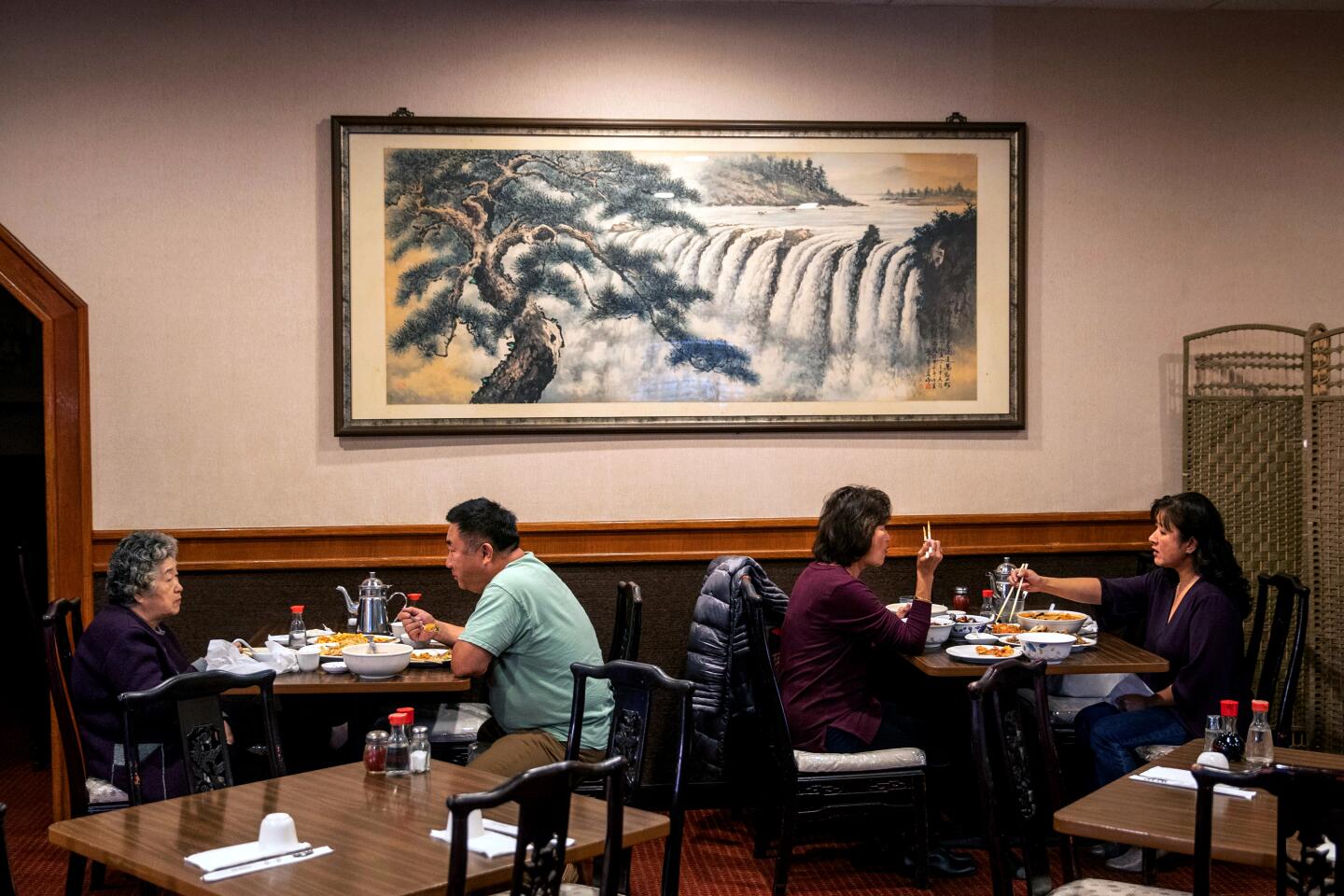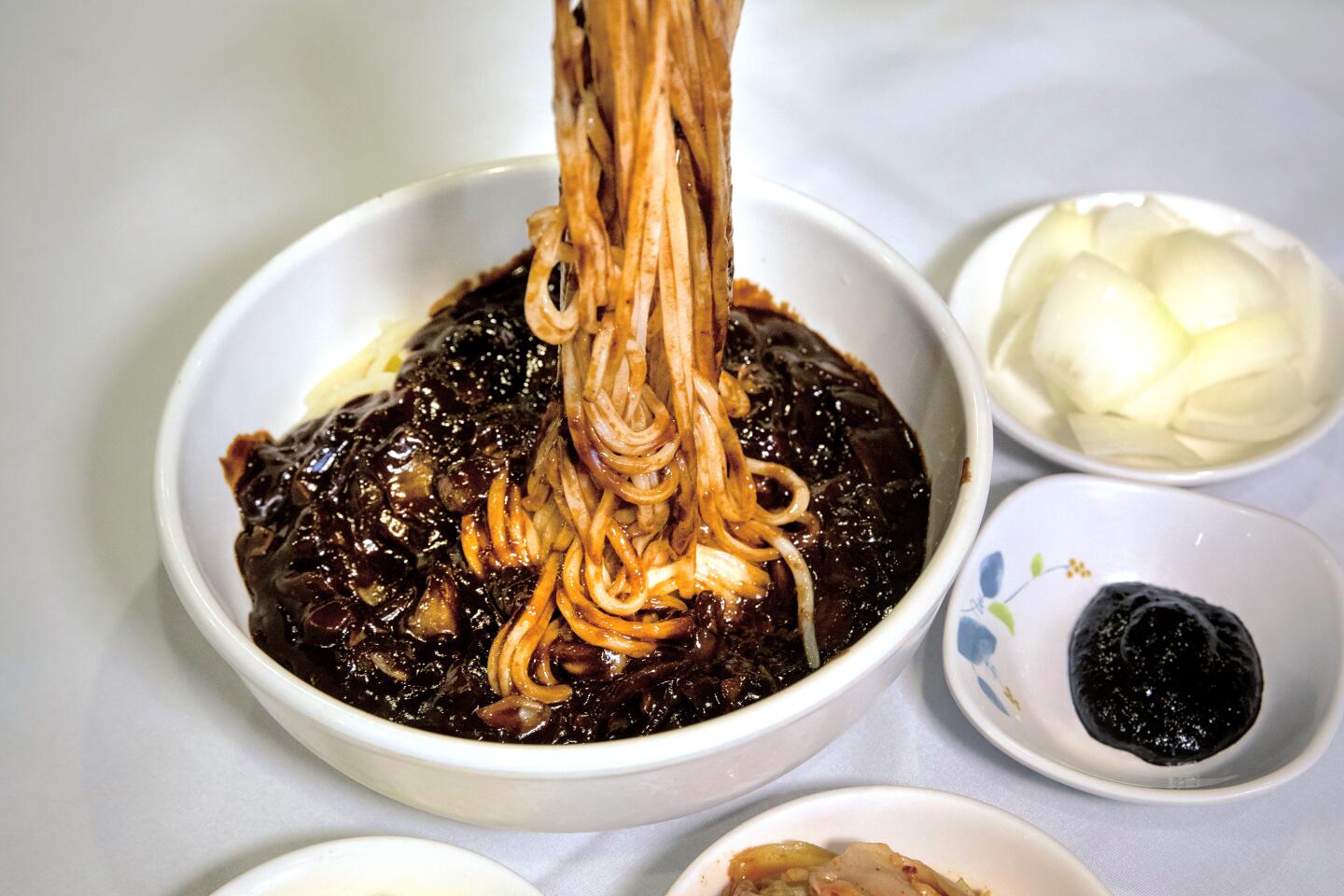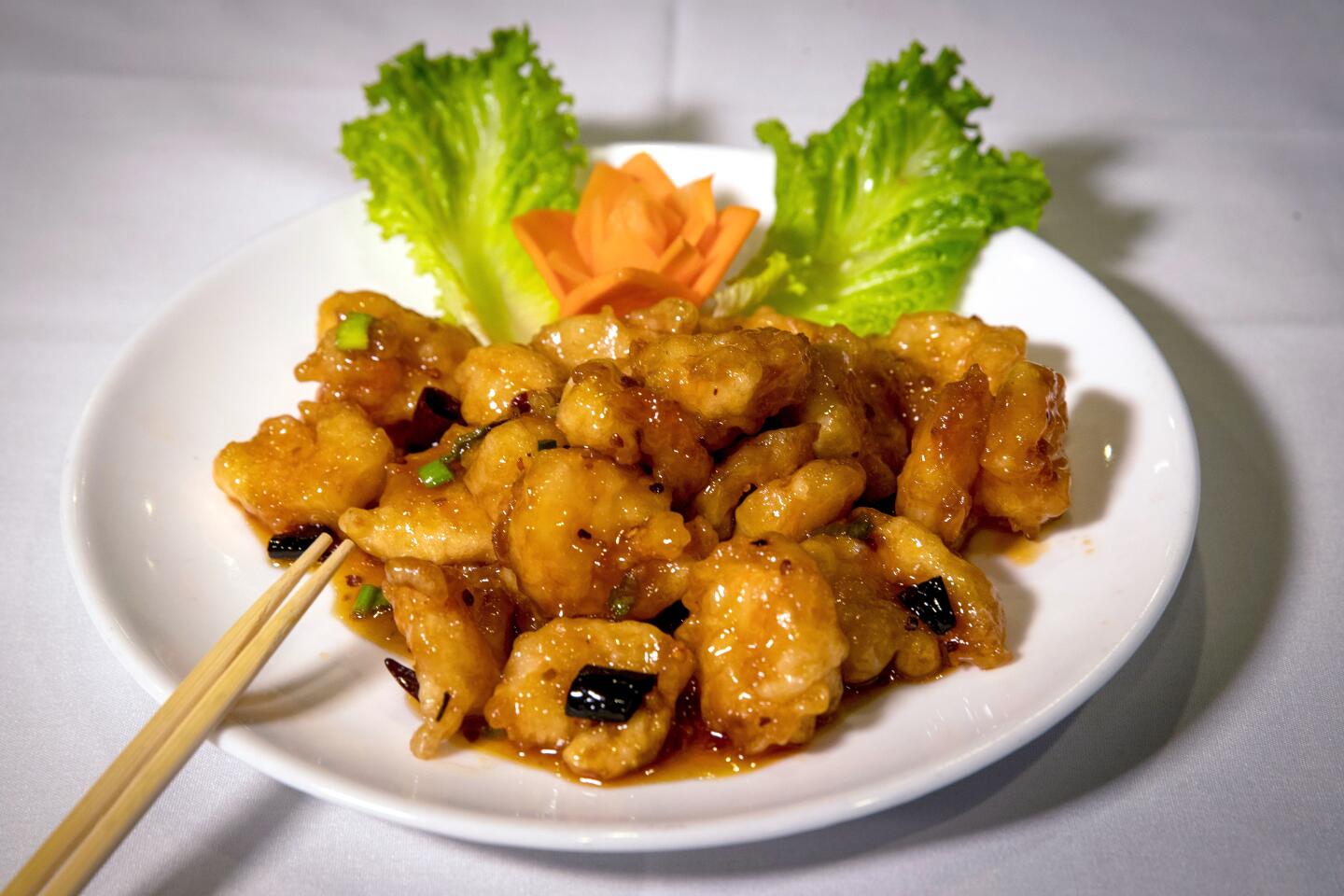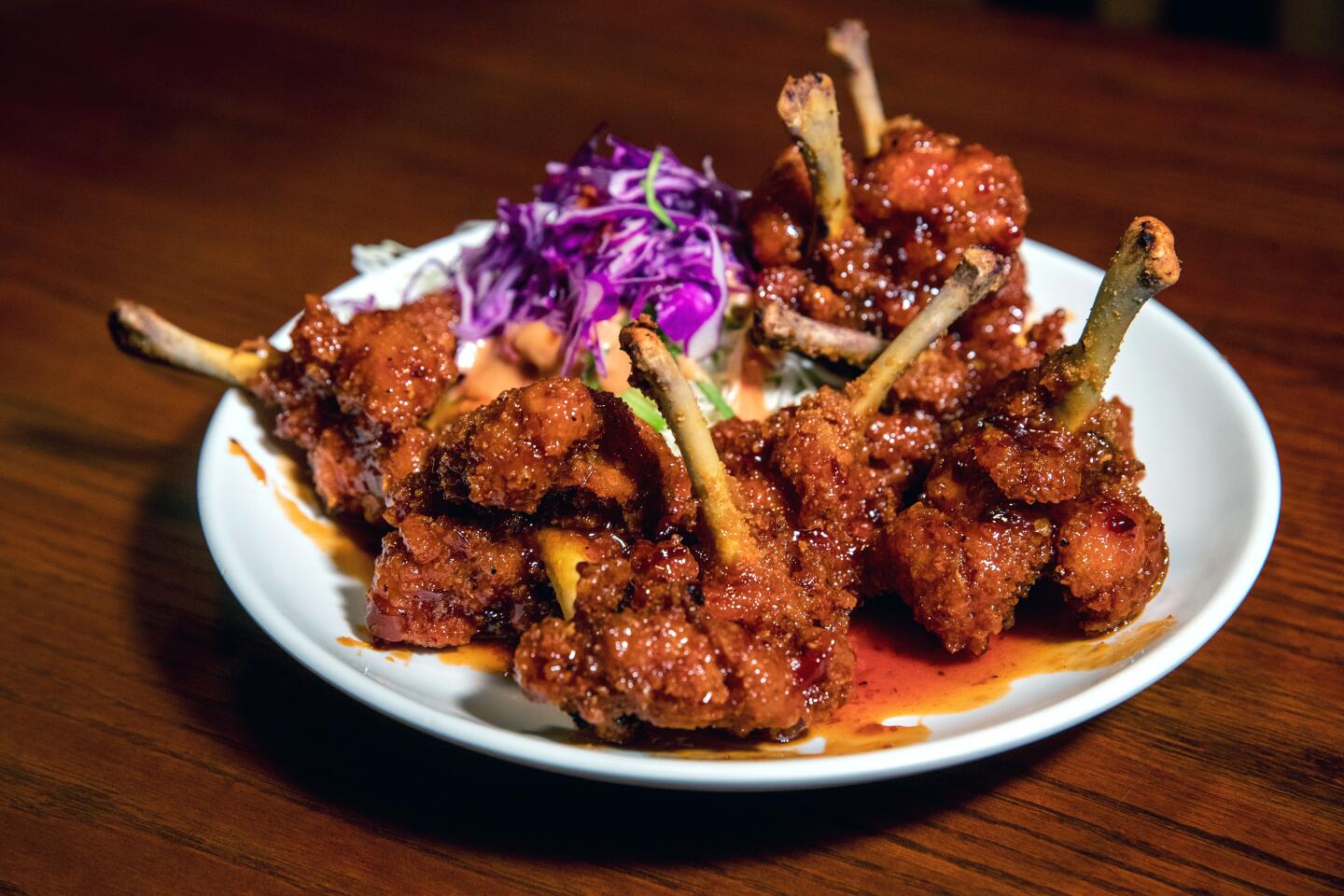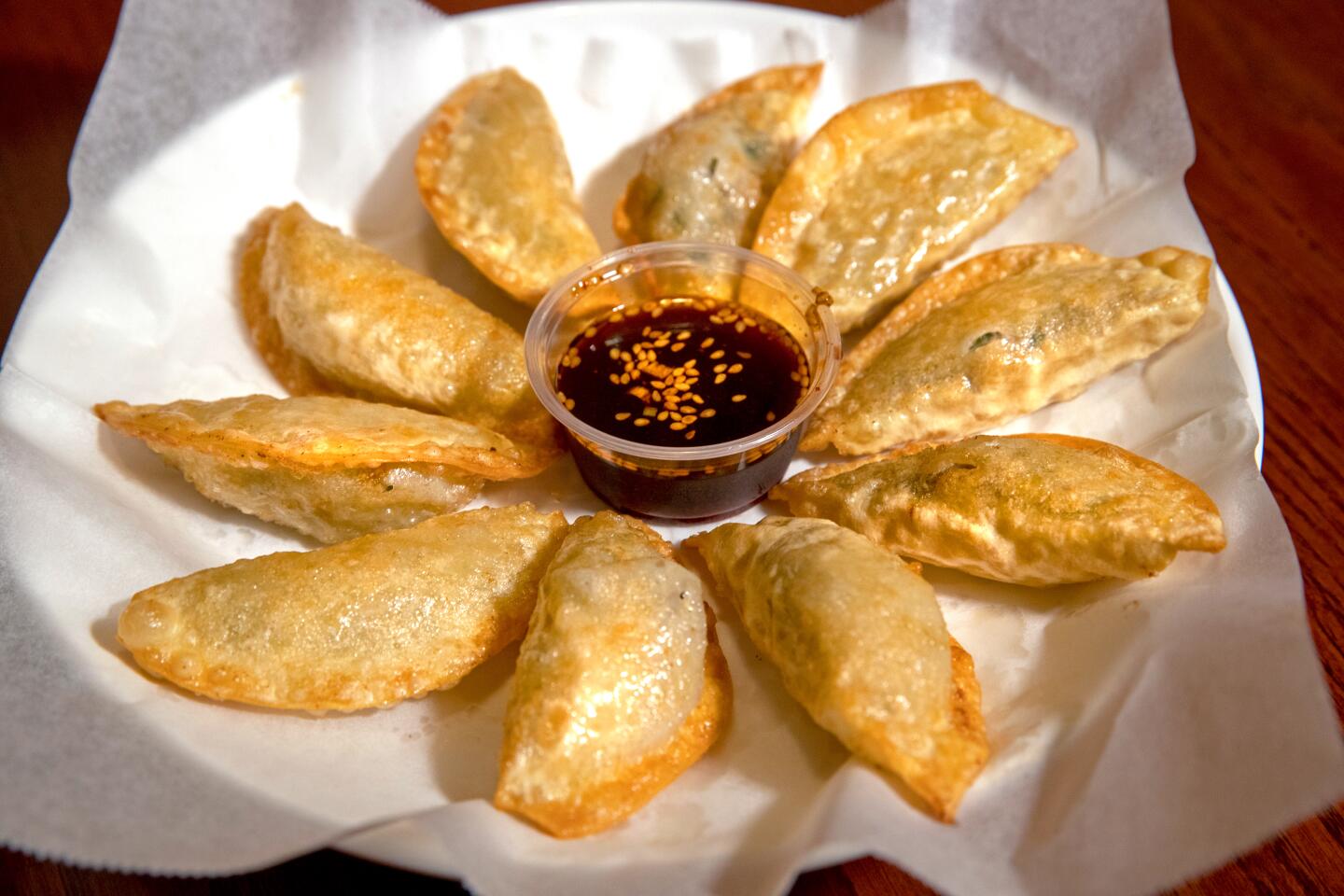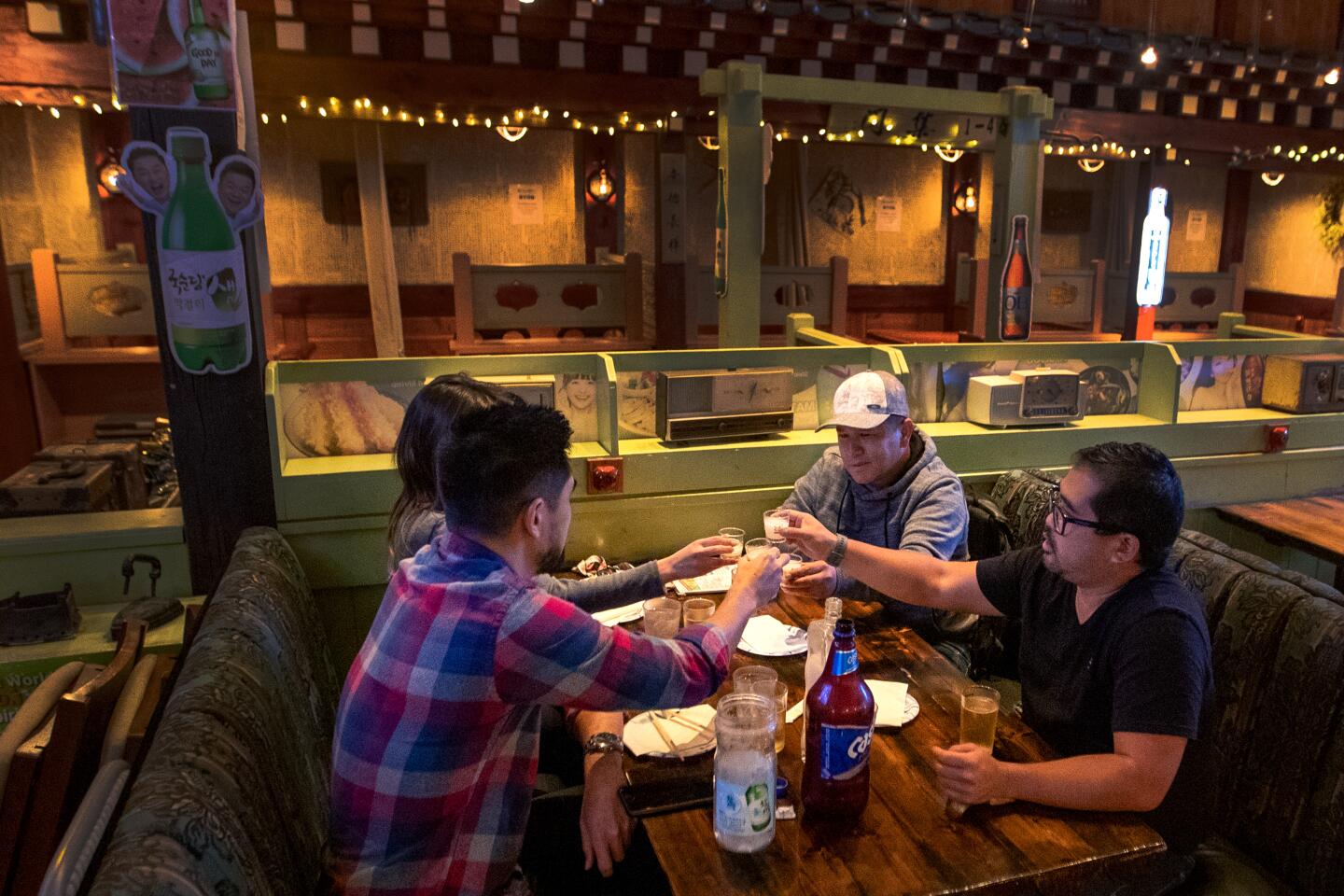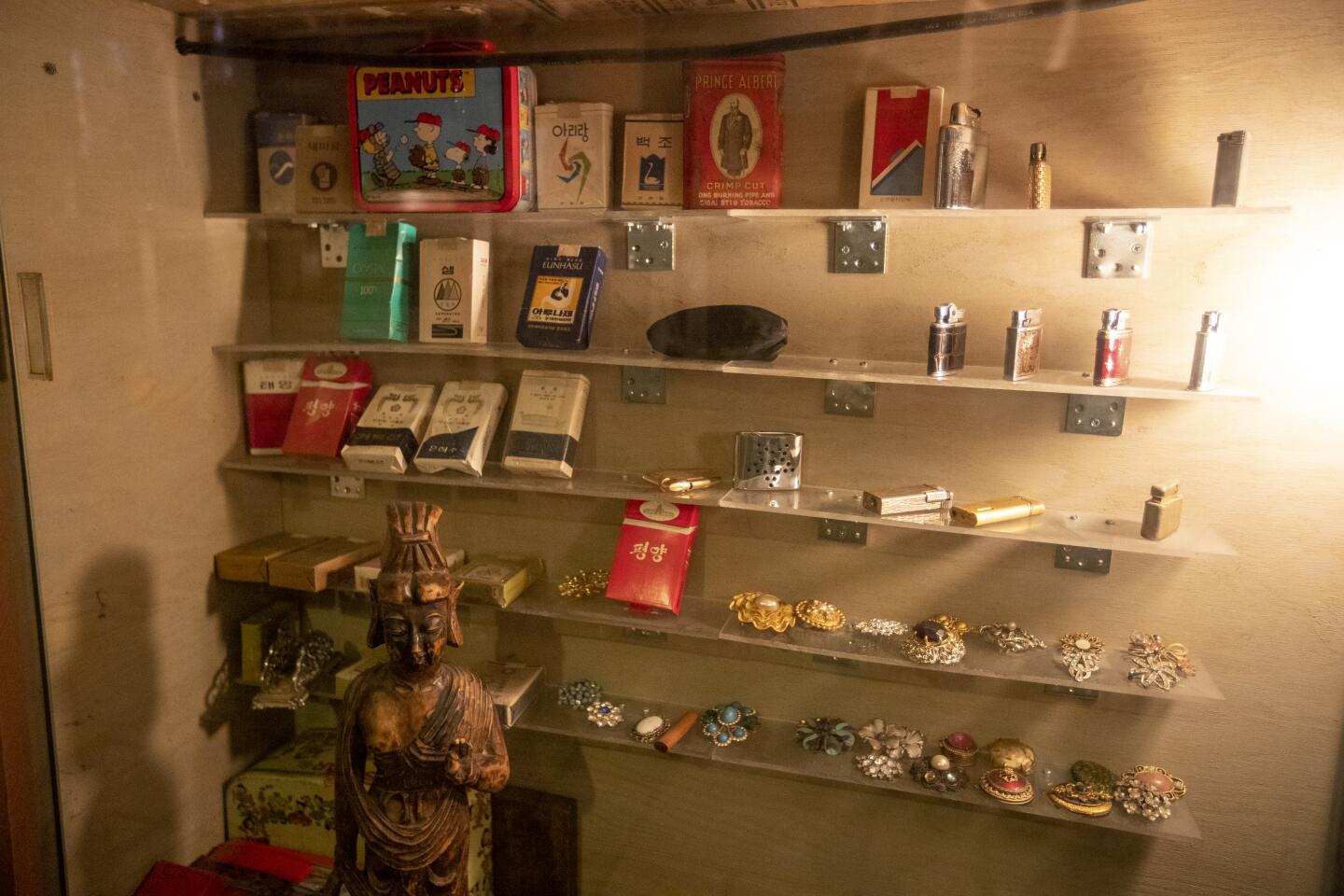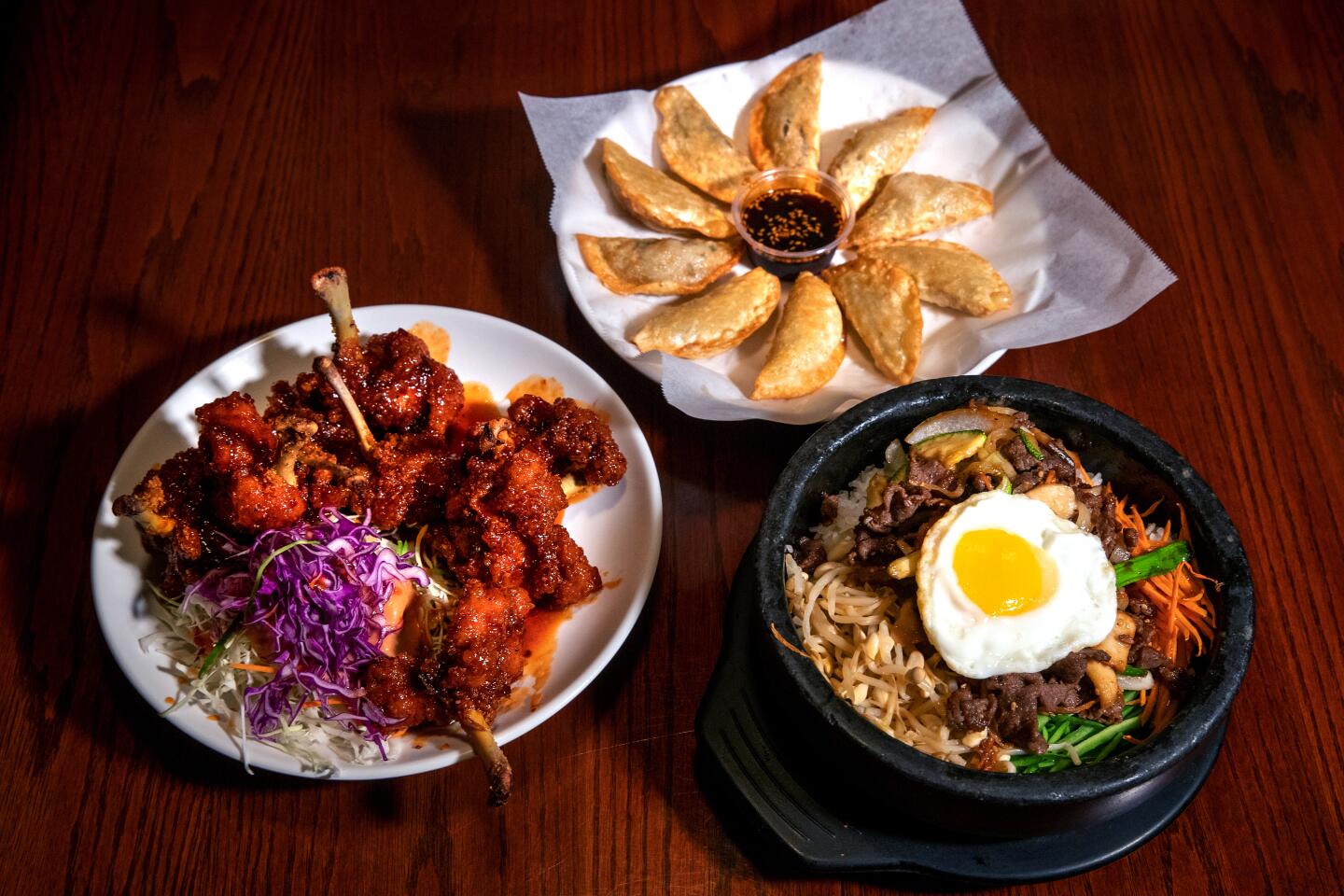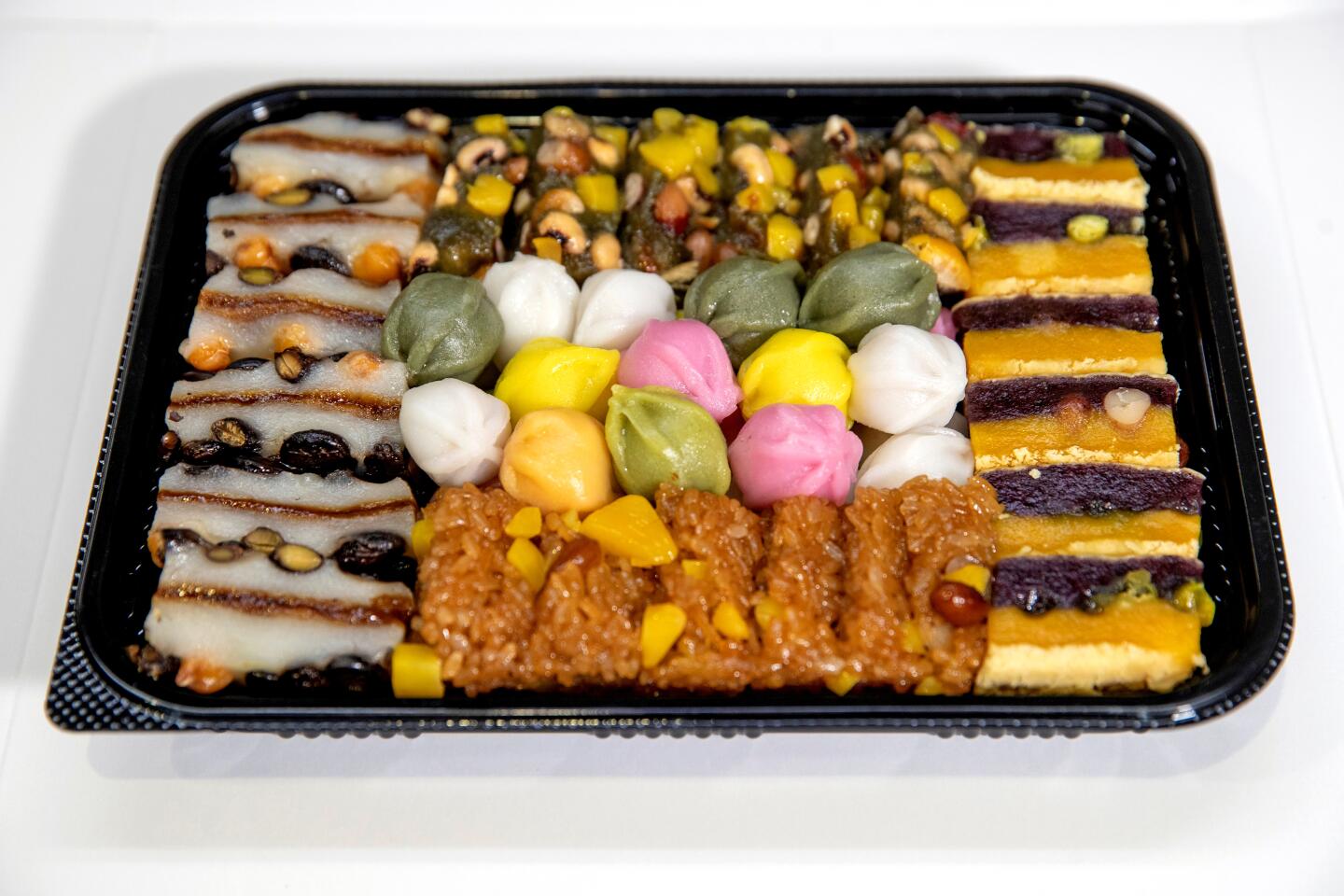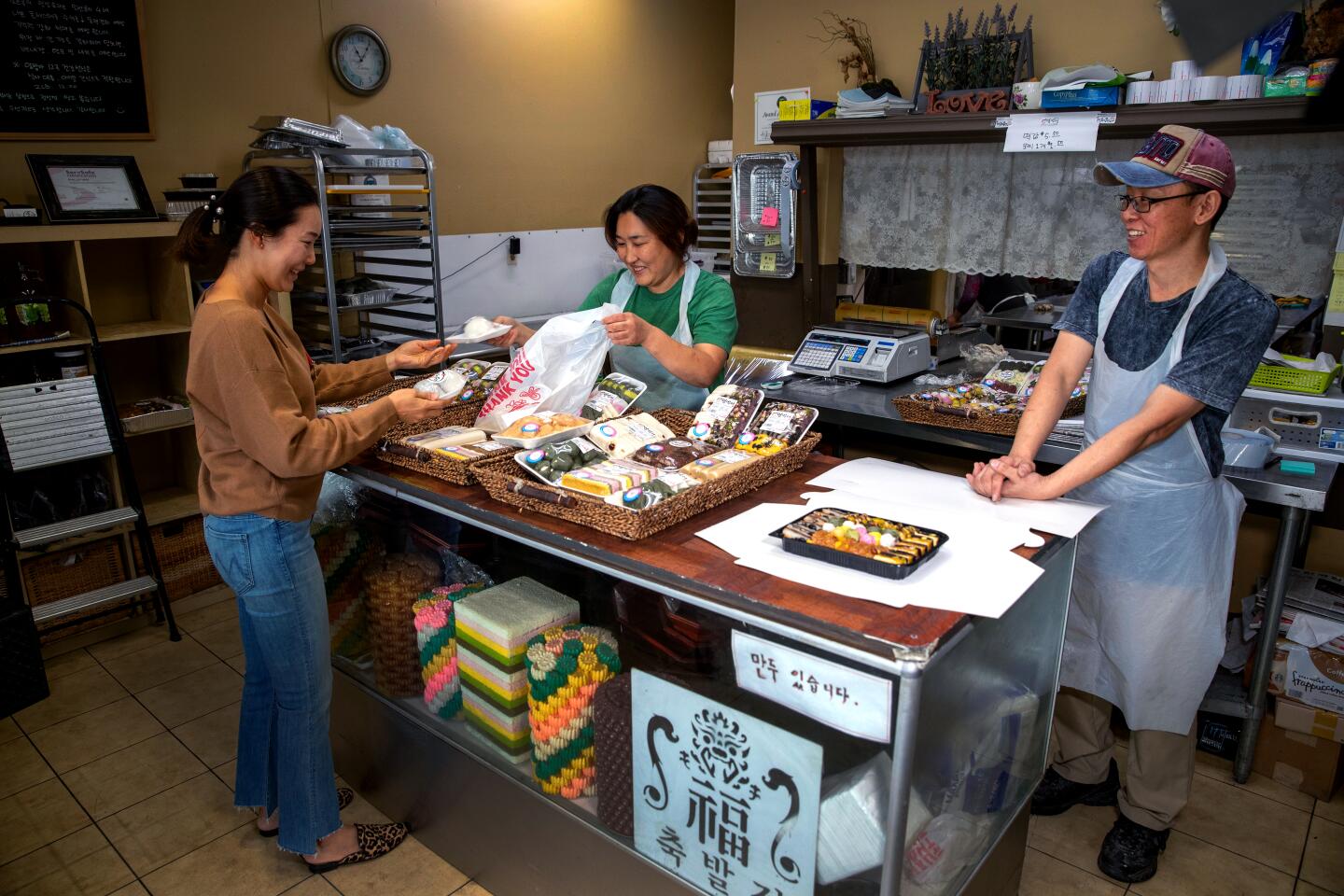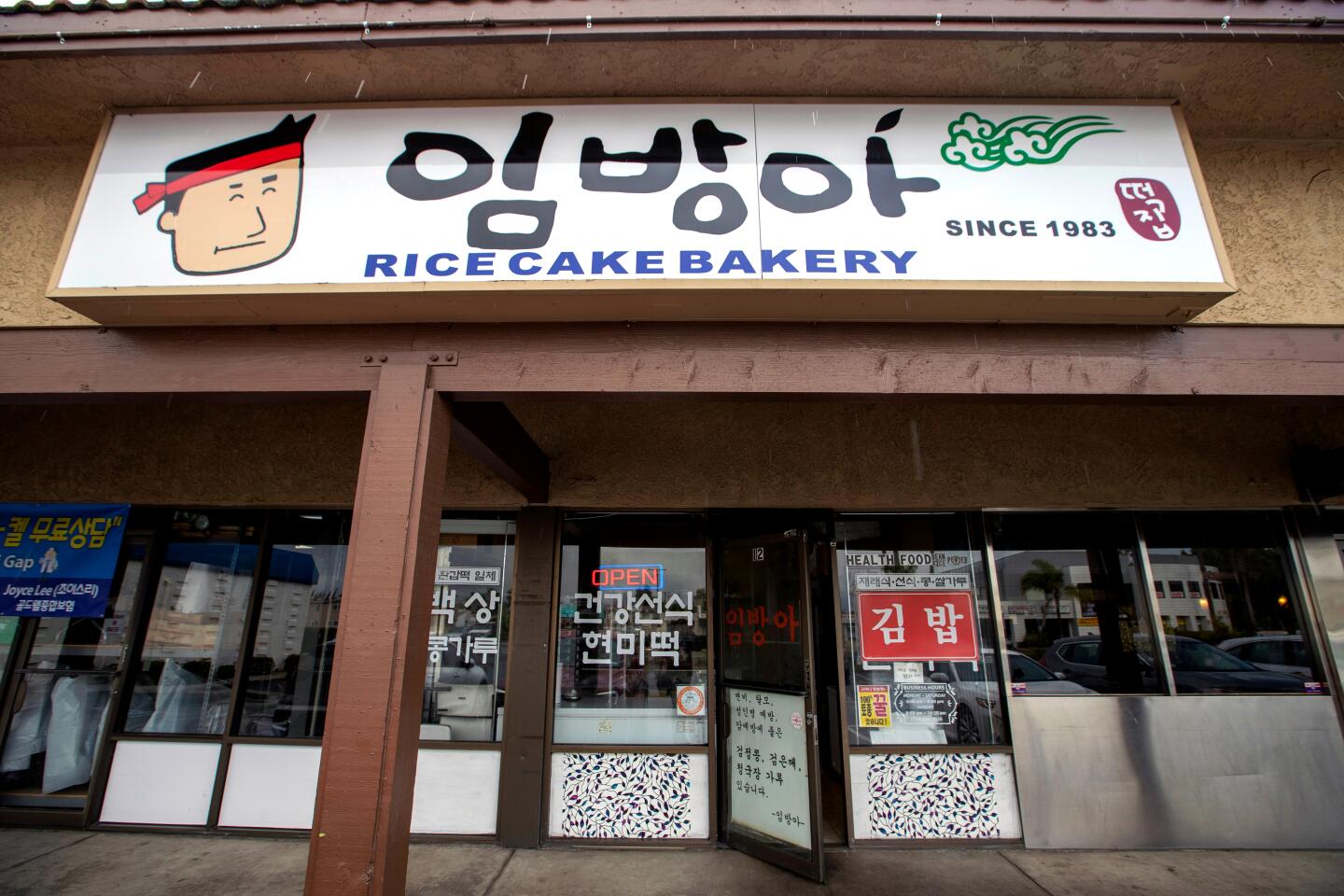A guide to Koreatown in Garden Grove: Orange County’s Korean cultural center
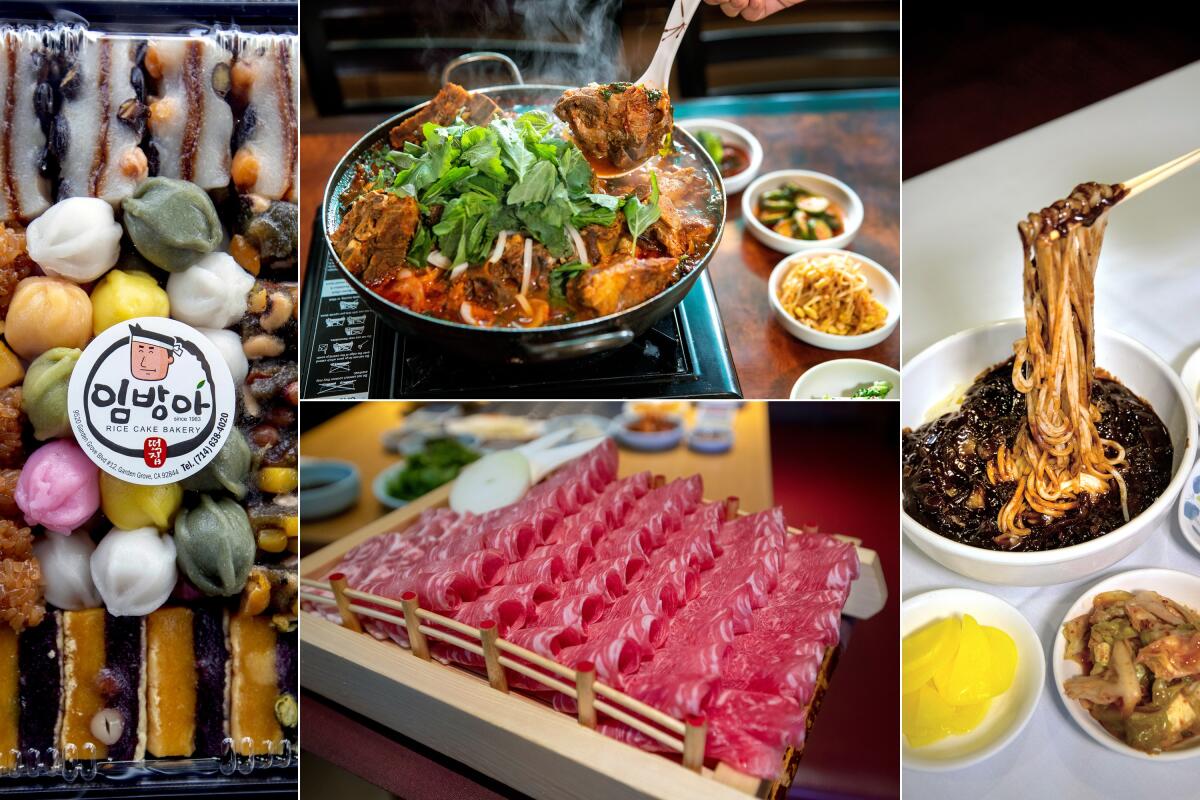
- Share via
The 2-mile stretch of Garden Grove Boulevard from Beach Boulevard to Brookhurst Street is a cultural time capsule: suspended in the traditions of a bygone era, steadfastly preserved by the nostalgia of an immigrant community that came to the States in the 1970s and ’80s. This longing for the old country informs the tastes of its residents, and the cooking in Garden Grove is more reflective of traditions that might not be aligned with much of modern-day Korea.
Garden Grove wasn’t always a welcoming place: In 1955, Korean War veteran and and two-time Olympic gold medal-winning diver Sammy Lee attempted to purchase a home in the Orange County suburb and was told that the house could not be sold to nonwhites.
Eat your way across L.A.
Get our weekly Tasting Notes newsletter for reviews, news and more.
You may occasionally receive promotional content from the Los Angeles Times.
The highly publicized incident and subsequent outrage led to Lee being offered another model home in Garden Grove, and was a watershed moment for the integration of Asian-Americans into a then-still-segregated America. Garden Grove became a natural choice for Korean-American immigrants — who, thanks to the Immigration and Nationality Act of 1965, were able to come to the States more easily — because it was a place that was famous for welcoming one of their own.
Since the 1990s, Korean-Americans have moved to the nearby cities of Fullerton, Buena Park and Irvine, some leaving the enclave of Garden Grove, others leaving Los Angeles’ Koreatown, particularly after the riots in 1992.
In those other Orange County cities, there are trendier restaurants and Seoul-based chains, making them a draw for a younger demographic. But the density of established Korean businesses in Garden Grove — the long-standing markets, restaurants, churches, doctors and immigration services tucked away in the corners of strip malls — insure that it remains the cultural center of Orange County’s Korean community.
Lucas goes to Orange County with chef Shawn Pham for some of the best Vietnamese food you can find outside of the country itself.
It continues to emanate an old-world and blue-collar sensibility. The area’s restaurants, many started out of necessity by entrepreneurial immigrants who wished to provide Korean food to a growing immigrant community, act as bastions catering to the tastes of the older generation — and anyone open to trying.
Mo Ran Gak
Mo Ran Gak is nominally a barbecue restaurant, but the thin, blushing slivers of thoroughly marbled brisket and buttery slabs of short rib are just a precursor for the true showstopper: bowls of the finest naengmyeon available anywhere.
For mul-naengmyeon, a bed of chewy buckwheat noodles is steeped in an ice-chilled beef broth. The broth masterfully balances onion, garlic, ginger and a whisper of soy sauce into a refreshing elixir; tune it up to your taste with a dash of vinegar and a dab of Korean hot mustard. The soup is topped with perfectly apportioned rations of thinly sliced brisket and an assortment of crunch: julienned batons of bae, or Korean pear, sliced cucumber and marinated radish.
Which is not to say the barbecue should be skipped: A major drawback of ordering only naengmyeon would be missing out on Mo Ran Gak’s impressive array of banchan, from the Korean jelly salad to jeon (Korean egg-batter fried rounds, usually containing fish) to the nokdujeon (a crunchy fried mung bean pancake). These are generally banchan that come with a full barbecue course, and a combination of meats is worth the splurge. A smaller sized naengmyeon is available at reduced pricing with barbecue orders, which should make the game plan pretty simple: Get it all.
Bill Addison reviews Jeong Yuk Jeom, an ambitious Korean BBQ restaurant in Koreatown whose hook is dry-aged meats.
The perpetually bustling restaurant is almost always busy — at peak meal hours, it might be best to put one’s name down and walk across the street to the A.R. Supermarket or Cheong Kwan Jang (a Korean red ginseng shop that sells herbal tonics in gift packaging) to do some gift shopping. Don’t be discouraged: Despite Mo Ran Gak’s humble appearance, the restaurant seats plenty and lines move quickly.
9651 Garden Grove Blvd., Garden Grove, (714) 638-1177, morangakrestaurant.com
Gamja Tang House
Gamja Tang House owner Kevin Hong comes from a family that specializes in gamjatang — his mother, Jeong Lee, ran the Garden Grove location before opening a second location in Buena Park. Hong whisks around the spartan assemblage of wooden chairs taking customers’ orders. The steam and scent of red pepper emanating from bubbling iron casseroles makes this an ideal dinner spot on cooler nights.
The Hong family’s gamjatang jeongol — the elemental pork neck-and-potato stew — comes piled high with kkaetnip, or perilla leaves. The dish requires a bit of tabletop boiling to fully break down the collagen and connective tissue. One of the unique features of Gamja Tang House is the wasabi that’s served in small dishes, meant to be mixed with soy sauce and used for dipping the meat you pick out of the pork neck bones. It’s an offbeat but satisfying kick of added heat that helps cut through the richness of the pork.
9567 Garden Grove Blvd., Garden Grove, (714) 530-1276
Peking Gourmet
Korean-Chinese food is one of the cornerstones of Korean cuisine. At its most sophisticated, the large banquet halls and multicourse menus are ingrained as a go-to option for Korean family gatherings and celebrations. At its simplest, it’s down-home comfort food. Peking Gourmet opened its doors in 1985 and not only served as a venue for celebrations in Garden Grove’s Korean-American community but as a go-to restaurant for all of the Korean-Chinese comfort food hits: jajangmyeon or fermented black bean paste noodles, fiery jjamppong (a spicy seafood noodle soup), mandu (dumplings stuffed with pork and ginger) and tang su yook, or Korean-style sweet-and-sour pork. Owner Suezy Li started out as a server and eventually purchased the restaurant from the original owners 14 years ago.
Peking Gourmet distinguishes itself in its careful execution of the classics: Jajangmyeon — sometimes greasy and wan — is lighter at Peking, where the glossy midnight-black sauce smacks of slightly sweet, salty, allium-inflected umami. I like to order the smaller portion size to save room for the mandu and tang su yook.
Li’s dumplings are made with an unusually thick mandupi, or dumpling wrapper, which makes it best suited for deep frying. The wrappers’ blistered crunch gives way to a chewier, pasta-like consistency underneath. And the pork in her tang su yook maintains its rice-flour battered crunch even swimming in a heaping helping of the sweet-and-sour sauce.
9092 Garden Grove Blvd., #A, Garden Grove, (714) 539-5301, pekingtogo.com
Hangari Kalgooksu
Not to be confused with the Hangari Kalguksu in Los Angeles (both are named after knife-cut noodle soups in earthenware pots), Hangari Kalgooksu in Garden Grove serves knife-cut noodle soup in massive earthenware pots meant to be shared by two or more. The ggong boribap — oats prepared in an identical manner to steamed rice — and yeolmu kimchi are the traditional starters at this Garden Grove establishment.
The al dente noodles are visibly hand-pulled and knife-cut, served in a hot broth redolent with clams. It would be prudent not to skip the deep golden-brown fried dumplings or the kimchi, both of which are some of the best in the city.
9916 Garden Grove Blvd., Garden Grove, (714) 537-0100
Min Sok Chon (Past Memories)
Past Memories is in some ways similar to OB Bear in Koreatown — a watering hole with a stunningly diverse menu of anju or Korean bar snacks. There are the soju cocktails and cheap pitchers of Hite beer you expect but also anju worth paying attention to, particularly the screaming hot spicy octopus stir-fry called nakji bokkeum, the buttery corn cheese and the fantastic odeng guk. The latter, a refreshing dashi-based broth with just a little bit of throat-tickling spice from sliced jalapeno peppers, is packed with odeng, or fish cakes, that are commonly found in the streetside drinking tents that serve serious drinkers throughout Seoul.
The interior features old-world Korean hanok-style wood furnishings and old signage from the post-war era and is home to convivial (and loud) crowds, particularly on the weekends.
9252 W. Garden Grove Blvd., #29, Garden Grove, (714) 638-7818, past-memories.cafes-usa.com
Lim Bang Ah (Korean Bakery Deli)
There are enough Korean celebrations and occasions for which it is nearly mandatory that someone purchases and brings dessert that I have a sneaking suspicion our traditions were cooked up by a cabal of tteokjips to sell more of their chewy rice-based cakes. Traditionally, these rice cakes were ordered in advance of a celebration like a baby’s first 100 days of survival (baekil) or first birthday (doljanchi) or a parent’s 60th birthday (hwangap janchi). In Garden Grove, Lim Bang Ah is the tteokjip of choice. Whether it’s an elaborate display of sesame/sugar-filled tteok for a wedding, or an order of those ovaline rice cakes for a New Year’s Day tteok manduguk (rice cake and dumpling soup) celebration, Lim Bang Ah has served the Garden Grove community for decades.
9520 Garden Grove Blvd., #12, Garden Grove
More to Read
Eat your way across L.A.
Get our weekly Tasting Notes newsletter for reviews, news and more.
You may occasionally receive promotional content from the Los Angeles Times.
